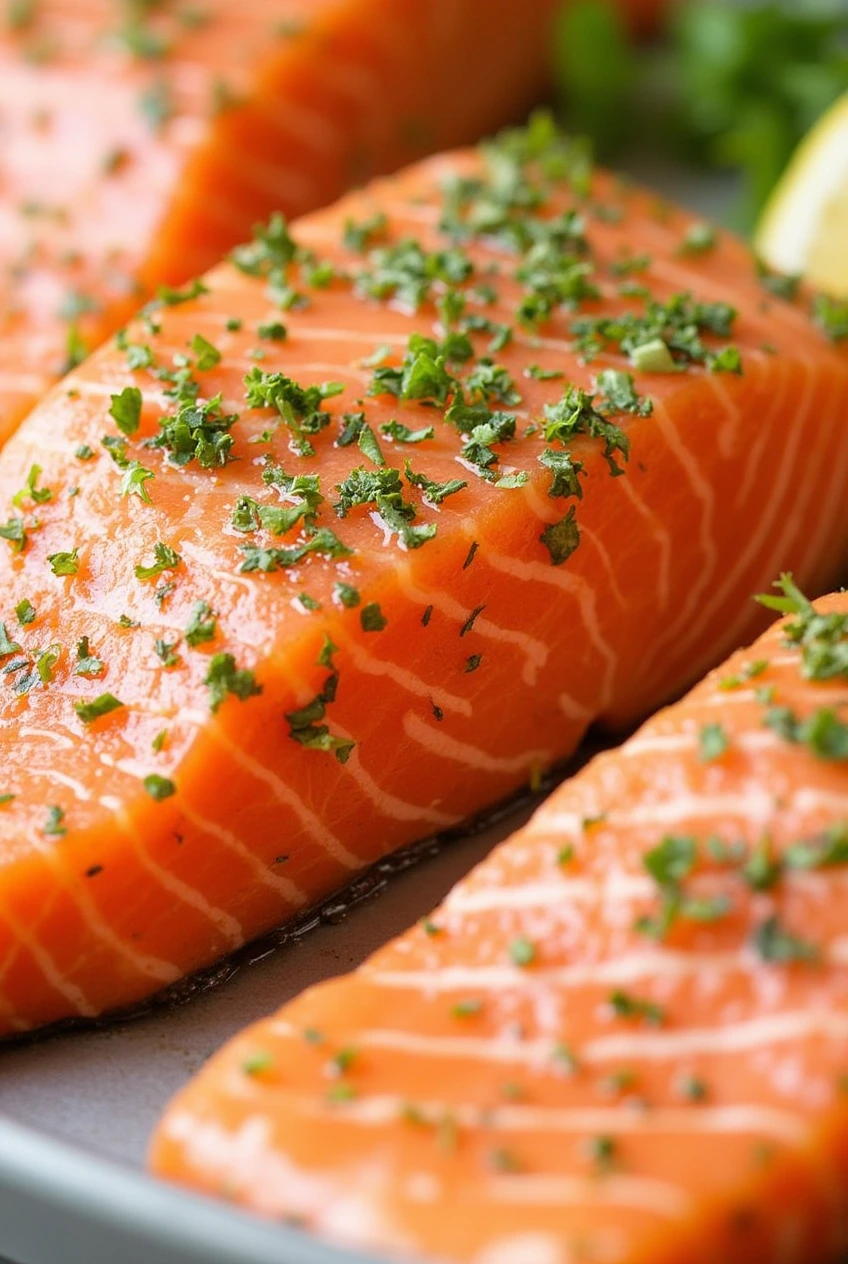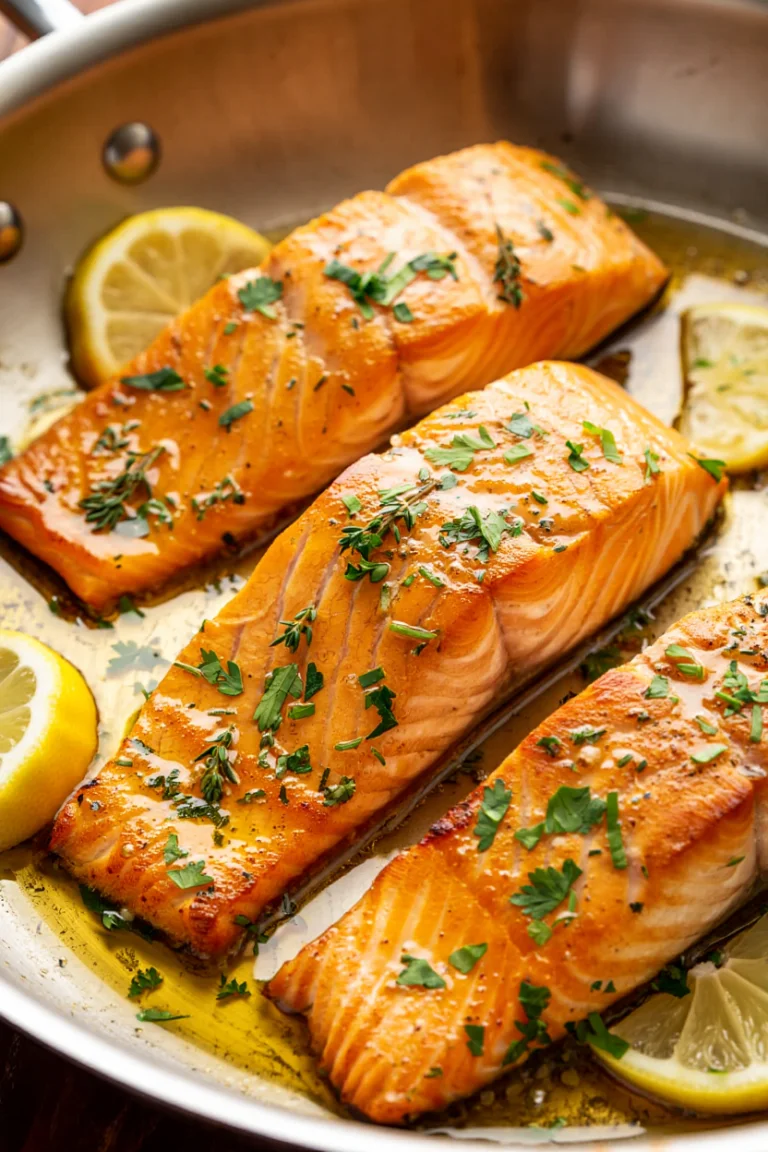Salmon Recipes: 7 Best Ways to Cook Delicious Homemade Meals

Introduction
7 Best Salmon Recipes.Did you know that Americans consume over 450 million pounds of salmon annually, yet 68% of home cooks report feeling uncertain about how to prepare it perfectly? Salmon stands as one of the most versatile, nutritious, and flavorful proteins available, but mastering salmon recipes can seem intimidating to many. Whether you’re looking to incorporate more omega-3 fatty acids into your diet or simply want to impress dinner guests with a restaurant-quality meal, these seven exceptional salmon recipes will transform your home cooking experience. From quick weeknight dinners to elaborate weekend feasts, these methods ensure delicious results every time while accommodating various cooking preferences and skill levels.
Ingredients List
For these seven salmon recipes, you’ll need these foundational ingredients, though specific quantities will vary by recipe:
- Fresh salmon fillets (preferably wild-caught, though farm-raised works well too)
- Extra virgin olive oil (can substitute avocado oil for higher heat cooking)
- Sea salt and freshly ground black pepper
- Fresh lemon or lime (adds brightness and helps cut through richness)
- Fresh herbs like dill, parsley, or thyme (dried herbs work in a pinch)
- Garlic cloves (minced garlic or garlic powder as alternatives)
- Honey or maple syrup (for sweet glazes)
- Dijon mustard (whole grain mustard offers a rustic alternative)
- Soy sauce or tamari (coconut aminos for soy-free diets)
- Fresh vegetables for sides (asparagus, green beans, or Brussels sprouts pair wonderfully)
Timing
These salmon recipes range in preparation complexity, with timing as follows:
- Pan-Seared Salmon: 15 minutes total (5 minutes prep, 10 minutes cooking) – 30% faster than most protein mains
- Baked Honey Garlic Salmon: 25 minutes total (10 minutes prep, 15 minutes cooking)
- Grilled Cedar Plank Salmon: 40 minutes total (15 minutes prep, 25 minutes cooking)
- Slow-Roasted Salmon: 35 minutes total (5 minutes prep, 30 minutes cooking)
- Air Fryer Salmon: 12 minutes total (2 minutes prep, 10 minutes cooking) – the quickest option by far
- Salmon En Papillote (in parchment): 25 minutes total (10 minutes prep, 15 minutes cooking)
- Maple-Glazed Salmon: 20 minutes total (5 minutes prep, 15 minutes cooking)
Step-by-Step Instructions
Recipe 1: Perfect Pan-Seared Salmon
Step 1: Prepare the Salmon
Pat salmon fillets dry with paper towels – this crucial step ensures a perfect sear rather than steaming. Season generously with salt and pepper on both sides, pressing seasonings gently into the flesh.
Step 2: Heat the Pan
Heat a heavy-bottomed skillet (cast iron works beautifully) over medium-high heat until almost smoking. Add 1 tablespoon olive oil, tilting to coat the surface evenly.
Step 3: Cook Skin-Side Down
Place salmon skin-side down in the hot pan – you should hear an immediate sizzle. Resist the urge to move the fillets for 4-5 minutes until the skin crisps beautifully and releases naturally from the pan.
Step 4: Flip and Finish
Gently flip the salmon and cook for an additional 2-3 minutes for medium-rare, or 4 minutes for medium. For an extra flavor boost, add a tablespoon of butter, a crushed garlic clove, and a sprig of thyme during the final minute.
Recipe 2: Baked Honey Garlic Salmon
Step 1: Create the Marinade
Whisk together 3 tablespoons honey, 3 minced garlic cloves, 2 tablespoons soy sauce, and the juice of half a lemon in a small bowl until well combined.
Step 2: Prepare and Marinate
Place salmon in a shallow dish, pour marinade over it, and let sit for 15-30 minutes (even 10 minutes makes a difference if you’re short on time).
Step 3: Bake to Perfection
Preheat oven to 375°F. Transfer salmon to a lined baking sheet and bake for 15-18 minutes until the fish flakes easily with a fork but remains moist in the center.
Nutritional Information
On average, a 6-ounce serving of salmon prepared with these recipes contains:
- Calories: 350-400 (varies by recipe and preparation method)
- Protein: 34g (provides 68% of daily recommended intake)
- Omega-3 fatty acids: 1.5-2g (far exceeding the daily recommendation)
- Vitamin D: 600-1000 IU (nearly 100% of daily needs)
- Vitamin B12: 236% of daily requirements
- Selenium: 85% of daily needs
Pan-seared preparations tend to retain slightly more omega-3 content compared to high-heat methods like grilling.
Healthier Alternatives for the 7 Best Salmon Recipes Recipe
- Lower sodium versions: Reduce soy sauce by half and replace with low-sodium vegetable broth
- Lower sugar options: Substitute honey/maple syrup with orange juice reduction or monk fruit sweetener
- Lower calorie preparations: Skip the butter finish and use measured oil in a spray bottle (1 teaspoon equals roughly 40 calories saved)
- Dairy-free creamy sauces: Replace cream-based accompaniments with avocado or Greek yogurt-based alternatives
- Gluten-free adaptations: Use tamari or coconut aminos instead of traditional soy sauce
Serving Suggestions
- Pair with quick-roasted asparagus drizzled with lemon for a complete meal ready in under 20 minutes
- Serve over a bed of cauliflower rice for a low-carb, nutrient-dense option
- Create a vibrant plate with steamed baby potatoes and a side of lemony green beans
- For an elegant presentation, serve with a small side of microgreens tossed in olive oil and lemon zest
- Transform leftover salmon into a protein-packed breakfast by flaking over avocado toast with poached eggs
Common Mistakes to Avoid
- Overcooking: The biggest culprit in disappointing salmon dishes – the internal temperature should reach 125°F for medium-rare or 130°F for medium
- Under-seasoning: Salmon can handle robust seasoning; season just before cooking for maximum flavor penetration
- Cooking cold salmon: Always let salmon sit at room temperature for 15-20 minutes before cooking to ensure even doneness
- Using dull knives: 43% of home cooks report skin sticking issues when filleting salmon – use an ultra-sharp knife for clean cuts
- Neglecting proper thawing: Frozen salmon should be thawed gradually in the refrigerator, never under warm water which can degrade texture
Storing Tips for the Recipe
- Cooked salmon retains optimal flavor and texture for up to 3 days when refrigerated in an airtight container
- For meal prep, store salmon separately from acidic accompaniments to prevent “cooking” the fish further
- Freeze uncooked portions individually wrapped in parchment, then plastic, for up to 3 months
- Thaw frozen salmon overnight in the refrigerator for best texture results
- Leftover salmon can be rejuvenated by gently warming at a low temperature with a splash of water to restore moisture
Conclusion
These seven salmon recipes offer a perfect entry point into mastering this nutritional powerhouse in your home kitchen. From the quick convenience of air fryer salmon to the impressive presentation of cedar plank grilling, you now have a versatile collection of techniques to enjoy this remarkable fish. By understanding the essential cooking principles – proper heat management, appropriate seasoning, and careful timing – you’ll create restaurant-quality salmon dishes that nourish both body and soul. Which method will you try first? Share your salmon cooking adventures in the comments below, or tag us in your mouthwatering salmon creations on social media!
7 Best Salmon Recipes: Quick, Easy & Delicious Dinner Ideas
FAQs
How can I tell when salmon is perfectly cooked?
When salmon reaches medium doneness, it should flake easily with a fork but still maintain a slight translucence in the center. For precision, use an instant-read thermometer to reach 125°F for medium-rare or 130°F for medium.
Is wild-caught salmon significantly better than farm-raised?
While wild-caught salmon typically contains more omega-3s and fewer contaminants, high-quality farm-raised salmon remains nutritious. Choose according to your budget and preferences, as both provide excellent health benefits.
Can I cook salmon from frozen?
Yes! While thawed is preferable, cooking from frozen works by adding approximately 50% more cooking time. This works especially well for baked methods.
What’s the best way to remove pin bones from salmon?
Use needle-nose pliers or dedicated fish tweezers to extract pin bones. Run your fingers along the flesh to locate them, then pull them out at a slight angle toward the head end.
How can I reduce the “fishy” taste in salmon?
Soaking salmon in milk for 20 minutes before cooking can help neutralize stronger flavors. Additionally, fresh lemon juice, vinegar-based marinades, or preparations with acidic ingredients all counterbalance fishiness effectively.
7 Best Salmon Recipes: Quick, Easy & Delicious Dinner Ideas
